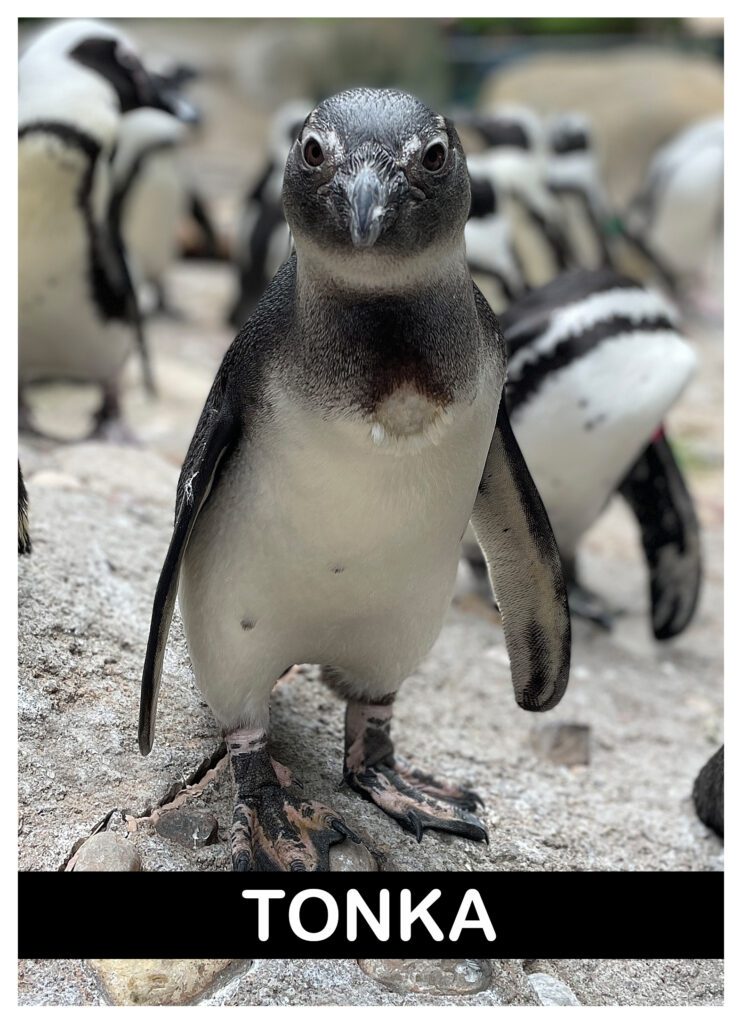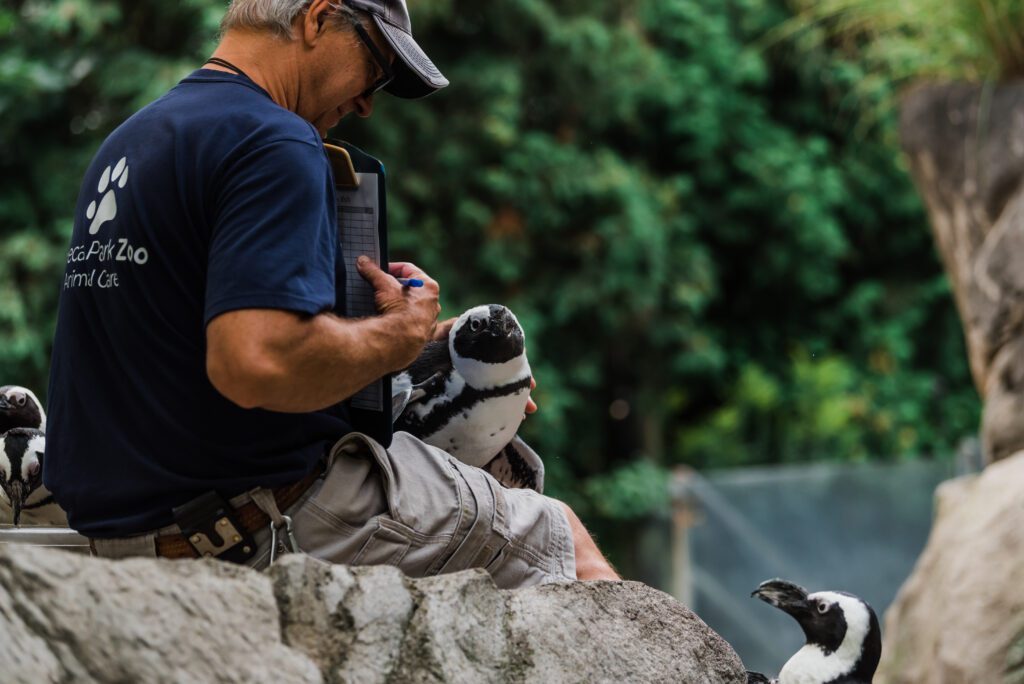
The turnaround may have begun back in 2020, when the Zoo was closed for several months, due to covid. As guests returned, we roped off the area around the penguin glass for guest protection, as it’s a high-touch area. This “buffer zone” seems to have offered a bit of comfort, but again, only the penguins know for sure.
Another factor may be that we’ve started handling our younger birds more, making them more comfortable around their keepers and more trusting of humans, in general. This seems to be reinforced by the fact that they are more likely to swim with a keeper “lifeguard” on duty.
However, the most important move likely came when we brought in 8 new penguins from several other facilities. These penguins were “known swimmers” and did not have the same fears that our colony had developed over the years. Over time, their eagerness to swim has become contagious, first with our younger birds and then to the parents. To date, nearly half of our 34 penguins have been observed swimming with sometimes a dozen at a time.
Now I know that there will be some long-time members who read this with skepticism so we’ve included a little video evidence. My suggestion would be to come out and see them yourself! The best time is when they first come out first thing in the morning at roughly 10 A.M.
Better hurry though, the snow is coming and these are warm-climate penguins!
– Zoo Keeper Kevin Blakely
Ways you can help African penguins:
- Adopt a penguin at SANCCOB – Adopt an African penguin or penguin egg that will be rehabilitated and released or adopt a ‘Home Pen’ bird that lives permanently at SANCCOB. Funds help to provide incubation, food, and veterinary treatment.
- Donate to SANCCOB – Whether you donate your time or money, you can make a difference in the survival of endangered African penguins and other seabirds in distress. For more information, visit sancob.co.za.
- Visit the Zoo to learn more about African penguins and the threats they face in nature through keeper chats, special experiences, and more.
- Purchase sustainably sourced seafood – Purchase seafood caught or farmed in ways that support a healthy ocean. Ask your local grocer if they sell sustainable seafood and visit seafoodwatch.org to learn more about eco-friendly options.

